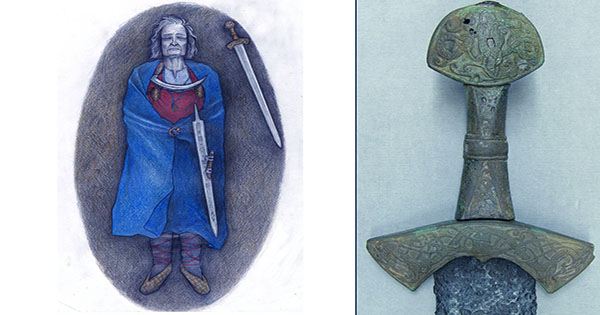Just 50 years ago, the remains of a warrior armed with a sword were discovered in southern Finland. Archaeologists recently took another look at this clearly respected person, discovering that they appear to have an extra X chromosome (XXY) and “probably could be non-binary.” The studies were recently published in the peer-reviewed European Journal of Archeology.
Radiocarbon dating shows that the body was probably buried in a tomb near the carpenter in the modern Finnish municipality of Hattula between 1040 and 1174 AD. Among the many discoveries of this new study, the researchers found that only one sword belonged to the actual burial setting. The other, which is more ornate and valuable, was probably buried on the site at a later date. The body was then dressed in ordinary women’s clothing but with two swords, which is often (though not always) associated with masculinity in many pre-modern European cultures.
To understand this person more deeply, a team from the University of Turku, the University of Helsinki, and the Max Planck Institute for Evolutionary Anthropology conducted an ancient DNA analysis of the wreckage. DNA was significantly damaged, but studies have shown that buried individuals may be born with sex-chromosomal aneuploidy XXY, also known as Klinefelter syndrome. “According to current data, the chromosome of the person obtained in Suontaka was probably XXY, although the DNA results were based on very small data,” said Elena Salmela, a postdoctoral researcher and author of the study at the University of Helsinki.
Klinefelter syndrome is a genetic condition where men are born with extra X chromosomes. The symptoms are often subtle, and some people don’t even realize they have the condition. The primary features are infertility and small testicles. Other symptoms include height increase, wide buttocks, loss of muscle mass, loss of body hair, development of a small penis and breasts. Some people with this condition find it difficult to socialize or express thoughts. When people in the twenty-first century look back to early medieval culture, it is extremely difficult to understand how this person perceived himself or how they were defined by the larger social environment, the researchers noted. Nevertheless, it is clear that this person was well respected in the community, as shown by the care and respect for their burial.















